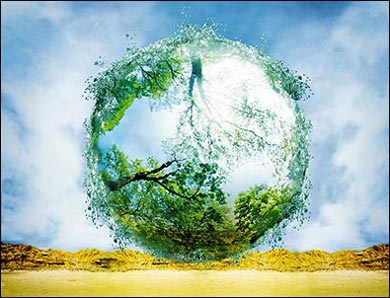THE GOOD NEWS about our nation’s vast array of lakes, rivers, coastal seas, aquifers, and wetlands is that, at press time, none of it was burning. That sounds a little glib, but as ���ϳԹ���‘s editors and writers embarked on the huge and sobering task of evaluating the current health of our nation’s water supply, we paused to remember just how bad things used to be. In the summer of 1969, in an episode that symbolized water-pollution problems all over the United States, Cleveland’s Cuyahoga River really did catch fire, thanks to piles of floating debris and slicks of spilled fuel. Time called it a waterway that “oozes rather than flows,” and the fiasco both shocked and energized the country. In 1972, Congress passed the Clean Water Act, codifying a crackdown on industrial pollution and untreated sewage that jump-started one of the great environmental cleanups in history.
The bad news now is that plenty of ills remain, and most of them can’t—or won’t—be fixed with federal action. Indeed, the Bush administration is currently trying to remove large areas of waterways and wetlands from Clean Water Act protection, and a recent internal EPA study found that over the last decade, the agency took action against only 15 percent of major industrial polluters.
As we show in the pages ahead, another pressing issue is supply. The world is running short of fresh, clean water, and so are many parts of the United States—and not just in the arid West. The competing demands of homeowners, developers, manufacturers, farmers, fishermen, environmentalists, and recreationalists mean that something has to give, and so far it’s usually been the resource itself. Great rivers like the Rio Grande and the Klamath don’t always make it to the sea anymore, the Everglades continues to lose ground, and portions of the Midwest’s High Plains Aquifer—a huge underground water source that supports almost a third of America’s farm output—are only two decades away from being sucked dry for good. Meanwhile, new pollutants have emerged that can’t be stopped just by closing off a pipe, and everywhere you look our water supply is being compromised by toxic runoff from cities, suburbs, and farms.
Fortunately, our experience in reporting this package was far from bleak, and we turned up a hopeful surprise: The crusade is on again, with an army of motivated watchdogs who are hammering out new ways to save the waterways that sustain our lives. Many of them are people who, like us, cherish wilderness, our best repository of clean water. These activists recognize that the next wave of ideas has to carry the spirit of compromise. We need sparkling, free-flowing rivers. We also need cities and farms and industries. The trick is having them both.
This won’t be a one-shot war, and ���ϳԹ��� will return to the water fight regularly in future issues. We hope you’ll join the cause—and read on.-the Editors
When Louisana Cadillac dealer Harold Schoeffler isn’t moving inventory, he’s closing deals to save wetlands in the Atchafalaya Basin and teaching the Deep South to see green.
By Peter Heller
After decades of abuse, the Everglades is now part of the costliest wetland restoration project in history. Can a hapless journey into its wet heart offer hope that the effort is worth it? Well, yes. And no.
By W. Hodding Carter
Crucial fights are heating up all over the country. We look at how their resolution could steer major policies for years to come. PLUS: The next generation of environmental heroes.
Our feel-good roster of inspiring victories: How the Gauley River got its flow back; against-all-odds dam removal; saving a California surf break; and more.
A survey of America’s Drinking Water, from the murky to the crystal clear.
Floating the Salmon; sail the Maine Island Trail; sea-kayak the San Juans; surf Waikiki; fly-fish the Alaskan wilderness; snorkel Florida’s most pristine park; and more.
PLUS:
; ; ; ; and the
The Water Issue
Wet, wonderful H2O ain't just the cure for the summertime blues. It's life itself—a priceless treasure that we've got to stop squandering.

New perk: Easily find new routes and hidden gems, upcoming running events, and more near you. Your weekly Local Running Newsletter has everything you need to lace up! .
